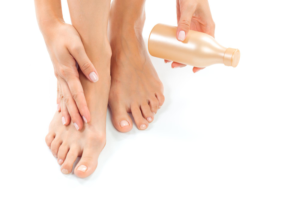A burn produces tissue injuries depending on its intensity and can cause minor illnesses or emergencies that can be fatal.
Depending on their severity, burns can be first, second, and third-degree, and their treatment depends on that order. In some cases, such as sunburn, they can be treated at home, but if they are deeper, they require specialized medical attention and more extensive therapy.
Burns often occur in the home and workplace, but most are preventable, according to the World Health Organization (WHO). Heat, radiation, electricity, friction, or contact with chemical agents can cause thermal burns through:
- Hot liquids
- Contact with hot solid objects
- Flame burns
Types of burns
Depending on the degree of skin damage, symptoms of severe burns may take one or two days to develop, according to a study by the Mayo Clinic. Symptoms are classified according to these symptoms.
-
First degree burn
This burn is mild and affects only the outer layer of the skin called the epidermis. It may cause redness and pain.
-
Second degree burn
It affects both the epidermis and the second layer of skin, the dermis. It can cause swelling and make the skin look red, white, or blotchy. Blisters may form and the pain may be intense. These types of deep burns can leave visible scars.
-
Third degree burns
This burn reaches the layer of fat under the skin. The burned areas may turn black, brown, or white. The skin may have a leathery, leathery appearance. These burns can destroy nerves, causing numbness.
Causes
Below are the different causes that can cause burns and which have to do with direct or indirect contact with heat. These are:
- Fire, flame, or explosion (such as fireworks)
- Hot liquid or vapor
- Contact with metal, glass, or other hot objects
- Electric current
- Radiation, such as from X-rays
- Sunlight and other sources of ultraviolet radiation, such as a tanning bed
- Chemicals such as acids, bleach, paint thinner gasoline, and many other products.

First aid and treatment
Once the types of burns are known, it is necessary to know the basic guidelines for treating them. The World Health Organization recommends the following:
-
What to do with a burn
Stop the burning process by removing clothing and moisturizing the affected areas.
Extinguish the flames by rolling the person on the floor, covering them with a blanket, or using water to put out the fire.
Use cool water to reduce the temperature of the burn.
In case of chemical burns, remove or dilute the chemical agent by irrigating with large amounts of water.
Wrap the patient in a clean cloth or sheet and transport him/her to the nearest health service.
-
What not to do with a burn
Ensure your safety before providing first aid. In the case of a chemical burn, protective gloves should be worn.
Do not apply ointments, oil, or any other type of topical medication to the burn. Do not use cotton on it either.
Do not apply ice, as this will only deepen the injury.
Irrigation with water should not be prolonged, as it may cause hypothermia.
Do not break blisters until they can be treated with antibiotic ointments.
Avoid direct contact of the wound with any type of tissue to prevent infection.
Treatment
Burns that turn out to be minor can be treated at home and healed within days to weeks. For moderate to severe injuries, the Mayo Clinic recommends the following first aid:
Sunburn
These types of burns usually appear over time and are not so obvious, so it is advisable to have regular evaluations. Depending on the type of injury, the symptoms may be relieved.
For pain, you can take a painkiller such as ibuprofen or acetaminophen. In addition, you should cool the skin with a clean towel moistened with cool water or take a bath with baking soda, approximately 60 grams. Apply an aloe vera cream or gel or a lotion with calamine.
Drink plenty of water to avoid dehydration and avoid further exposure to the sun.
Chemical burns
Medical attention should be sought if burns involve the hands, feet, face, groin, buttocks, joint, or a large area of the body. It is important to take first aid and seek expert evaluation in these cases.

Another type of burn
Medical treatment for burns varies and may include medication, physical therapy, surgery, and other methods. There are treatments for scarring, such as the use of ointments or dressings, or the use of medicines such as intravenous antibiotics to combat infection.
More advanced surgery and treatment
If the burns are more severe, respiratory assistance, skin graft surgery, or scar reconstruction may be used.
Prevention
Various risk factors can cause a burn, so according to the WHO, these are the safety measures that should be taken:
- Hide matches, and lighters and leave any type of flammable materials out of the reach of children.
- Do not leave candles lit near children.
- Avoid smoking at home and especially in bed. Before disposing of waste from the ashtray, spray it with water.
- Keep a fire extinguisher and learn how to use it in emergencies.
- Teach children what to do if their clothes catch fire. Show them not to run, drop, and roll to put out the flames.
- Determine the emergency exits in your home in case of a fire. Remember that to get out you have to crawl on the floor in areas where smoke is concentrated.

Who is at risk for burns?
According to the WHO, the rate of cases and deaths from burns is slightly higher in women than in men. This is because women are more exposed to the risk of cooking outdoors or other risks in such spaces.
Along with women, children are another group that is particularly vulnerable to burns, being the fifth most common cause of injuries during childhood. In many cases, the greatest risk is the lack of parental supervision.























+ There are no comments
Add yours